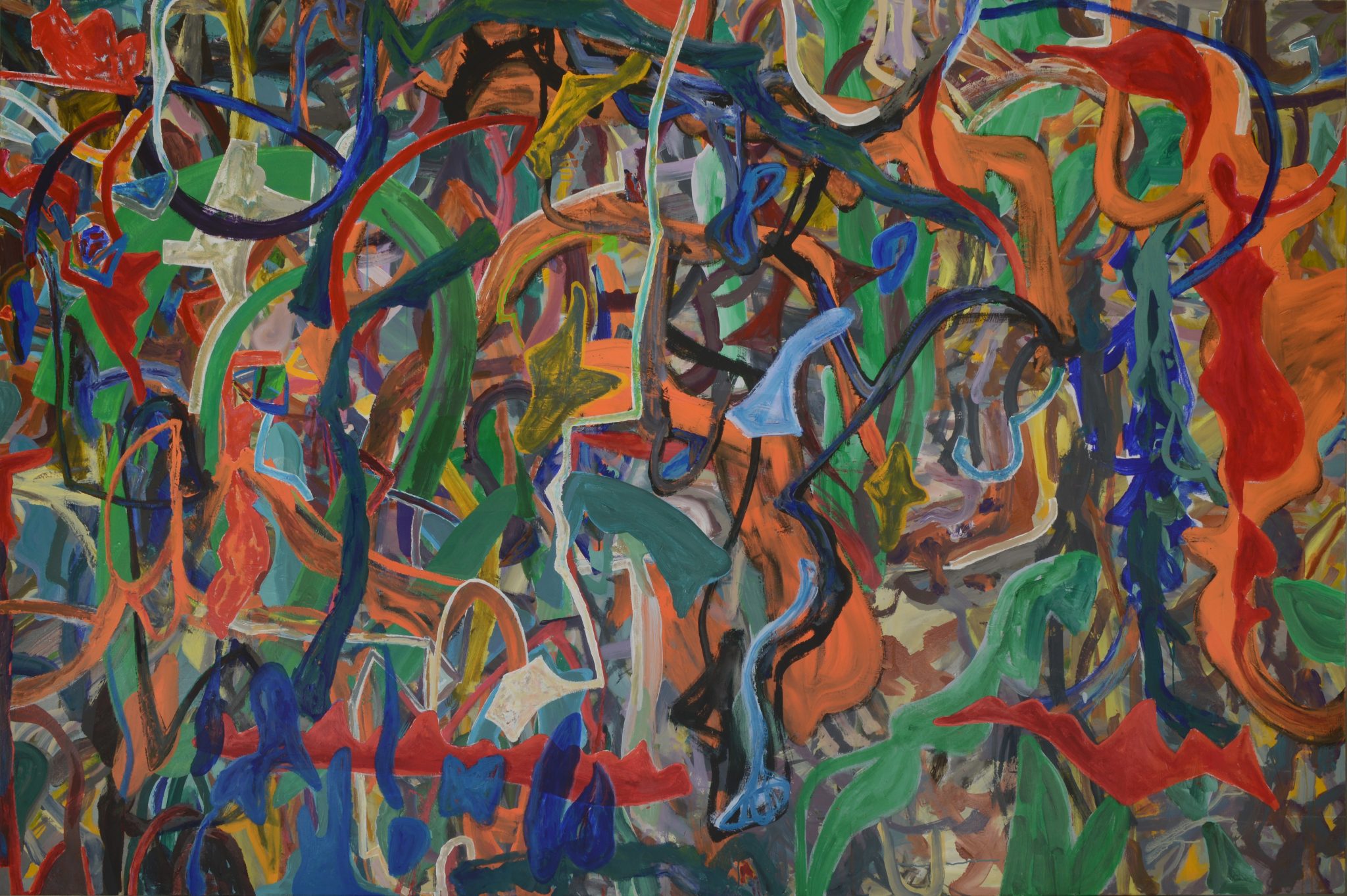In his latest exhibition Hoang Duong Cam eschews the visual immediacy of painting
Can you be an abstract and a political painter? Hoang Duong Cam certainly tries to marry nonfigurative art with an investigation into his native Vietnam’s cultural and political history. In this thought-provoking exhibition of recent works, the paintings are, at first glance, dynamic surfaces covered with swirls, strokes and splashes of colour, reminiscent of topological or organic forms: roads, rivers, vines, branches, clouds, (scorched) earth. But in the wall texts, which are written in the first person, Cam tells us about the inspirations behind the paintings, which can be literature, music, philosophy and/or historical events, especially those surrounding the Vietnam War.
In this way, the exhibition leans heavily on expositions of authorial intent; almost every painting is accompanied by an account of the artist’s inspirations. Depending on personal tolerance, you will find the captions illuminating or intrusive. It’s a bit of both for me. Sometimes the advisory added a new dimension to my interpretation; at others they foreclosed alternative experiences. Sometimes they were simply not very helpful. For example, for the painting Hanging a Bird Net (2017), Cam writes that the title is that of a short story by Nguyên Huy Thiêp, ‘an author who gained his name during the time of change in Vietnam in the late 1980s’ – information that would mean little to those unfamiliar with Vietnamese literature.
What I found most persuasive in this exhibition is when, firstly, the painting is in itself visually compelling and, secondly, the backstory illuminates it in an unexpected yet strangely apt way. Take Sunlight in the Garden (2021), two delicate works with strokes and dabs rendered in impasto, on compact, framed canvases of about 35 × 35 cm. Because of their small size, these works seem like isolated corners of a larger painting that are magnified to show the details of the artist’s technique. If Impressionism melts away real-life scenes into dots and dabs, these works seem like a further dissolution of that dissolution, into pure mood.
The wall text says that the series borrows its title from and was inspired by a 1938 short story by Vietnamese author Thach Lam, about a young couple’s doomed relationship and their inevitable parting, a love that the writer likens to sunlight draping a garden in beauty. (Again, as I’m no expert on Vietnamese literature, I’m taking Cam’s word for it.) Cam adds that he names his paintings after sites of violent warfare during the Vietnam War, like Huê and Quang Tri, primary sites of the Tet and Easter offensives. In this work, word and image work together to create a sustained mood of ironic melancholy. A close cousin of this strategy is a style of film direction that layers classical music over scenes of extreme violence to create dissonance.
Not all of Hoang’s influences dovetail so skilfully. Sometimes the allegory gets too obvious. The Lightings – Ideal Forms Found in the U Minh Forest (2022–24) series of largescale paintings are filled with brightly coloured strokes of paint, sometimes in geometric shapes or undulating lines, that jump out of the canvas as if illuminated by flashes of lightning. These works are supposedly inspired by the myths surrounding U Minh Forest (‘forest of darkness’) in the southernmost part of Vietnam, an impenetrable jungle that has historically been a hiding place for pirates, smugglers, bandits and the Viet Cong. Hoang adds that ‘U Minh’ can also be used to describe a mental state of uncertainty and not-knowing. Hence, you are invited to relate the paintings’ protean and inchoate forms to the forest’s impenetrability and a psychological state that is like the ‘beginner’s mind’ in Zen philosophy. The paintings may be chaotic and rowdy, but the metaphor they provide is too neat.
So, can abstract art have political content? In Hoang’s case, yes, with the supplementary text doing some heavy lifting. People in the ‘if it’s not in the painting, it’s not in the painting’ camp will find this problematic, of course. They might also say that relying on written information is undemocratic, because it assumes literacy, unlike the visual immediacy of painting. But if we allow that an account of the artist’s intentions can provide a friendly, noncompulsory advisory towards interpretation, then Hoang’s work does present an intriguing case study of how abstraction can intersect with politics – even if it’s mostly done by the artist’s own authentication. It’s up to you whether you want to buy his story.
Light permeates the wounds, The Ngee Ann Kongsi Galleries, Nanyang Academy of Fine Arts, Singapore, 5 July – 7 August
